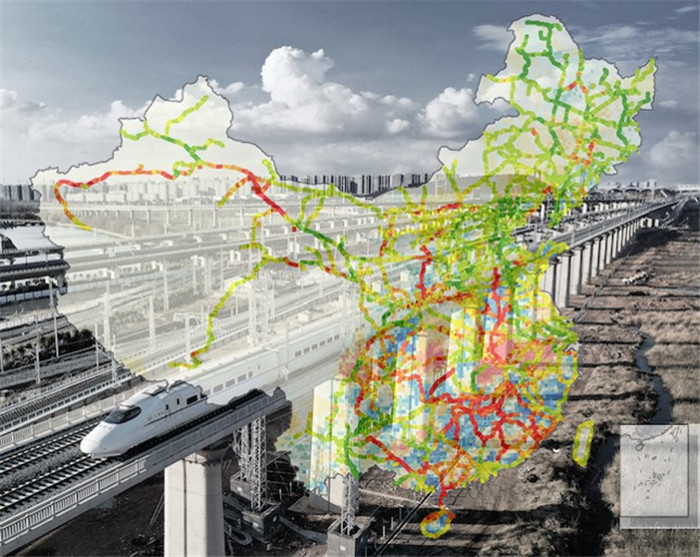搜索结果: 1-15 共查到“大气科学 Part 2”相关记录125条 . 查询时间(0.14 秒)

铁路等关键基础设施对国家战略实施和经济社会发展至关重要。近年来,极端天气事件频发对关键基础设施的安全运营带来了极大的威胁。据公开数据统计,在1981-2016年间,全国范围内共发生约975起降水导致的铁路线路灾害事故。在未来全球增温背景下,极端降水事件的频率将增加、强度将增大,这势必会使得包括铁路在内的基础设施面临更大的安全风险,导致建设和维护费用增加。但是,关于极端降水与铁路灾害风险之间的关系尚...
VEGETATION RESPONSE TO CLIMATE CHANGE IN THE SOUTHERN PART OF QINGHAI-TIBET PLATEAU AT BASINAL SCALE
NDVI Vegetation Climate Change the Qinghai-Tibet Plateau
2018/5/15
Global climate change has significantly affected vegetation variation in the third-polar region of the world – the Qinghai-Tibet Plateau. As one of the most important indicators of vegetation variatio...
Emulating atmosphere-ocean and carbon cycle models with a simpler model, MAGICC6 – Part 2: Applications
atmosphere-ocean carbon cycle models a simpler model MAGICC6
2011/2/25
Intercomparisons of coupled atmosphere-ocean general circulation models (AOGCMs) and carbon cycle models are important for galvanizing our current scientific knowledge to project future climate. Inter...
Emulating coupled atmosphere-ocean and carbon cycle models with a simpler model, MAGICC6 – Part 1: Model description and calibration
coupled atmosphere-ocean carbon cycle models a simpler model MAGICC6
2011/2/25
Current scientific knowledge on the future response of the climate system to human-induced perturbations is comprehensively captured by various model intercomparison efforts. In the preparation of the...
The Chemistry of Atmosphere-Forest Exchange (CAFE) Model – Part 2: Application to BEARPEX-2007 observations
Atmosphere-Forest Exchange (CAFE) Model BEARPEX-2007 observations
2011/2/25
In a companion paper, we introduced the Chemistry of Atmosphere-Forest Exchange (CAFE) model, a vertically-resolved 1-D chemical transport model designed to probe the details of near-surface reactive ...
Modeling natural emissions in the Community Multiscale Air Quality (CMAQ) model – Part 2: Modifications for simulating natural emissions
natural emissions the Community Multiscale Air Quality (CMAQ) model
2011/1/19
The Community Multiscale Air Quality (CMAQ) model version 4.6 has been revised with regard to the representation of chlorine (HCl, ClNO2) and sulfur (dimethylsulfide, or DMS, and H2S), and evaluated a...
Tracer concentration profiles measured in central London as part of the REPARTEE campaign
Tracer concentration central London the REPARTEE campaign
2011/1/19
There have been relatively few tracer experiments carried out that have looked at vertical plume spread in urban areas. In this paper we present results from two tracer (cyclic perfluorocarbon) experi...
The Chemistry of Atmosphere-Forest Exchange (CAFE) Model – Part 1: Model description and characterization
Atmosphere-Forest Exchange (CAFE) Model Model description and characterization
2011/1/19
We present the Chemistry of Atmosphere-Forest Exchange (CAFE) model, a vertically-resolved 1-D chemical transport model designed to probe the details of near-surface reactive gas exchange. CAFE integr...
SOSA – a new model to simulate the concentrations of organic vapours and sulphuric acid inside the ABL – Part 1: Model description and initial evaluation
SOSA organic vapours sulphuric acid the ABL initial evaluation
2011/1/18
Chemistry in the atmospheric boundary layer (ABL) is controlled by complex processes of surface fluxes, flow, turbulent transport, and chemical reactions. We present a new model SOSA (model to simulat...
Comparison of UV irradiances from Aura/Ozone Monitoring Instrument (OMI) with Brewer measurements at El Arenosillo (Spain) – Part 2: Analysis of site aerosol influence
Aura/Ozone Monitoring Instrument Brewer measurements El Arenosillo
2010/12/28
Several validation studies have shown a notable overestimation of the clear sky ultraviolet (UV) irradiance at the Earth's surface derived from satellite sensors such as the Total Ozone Mapping Spectr...
Dynamics of the Antarctic and Arctic mesosphere and lower thermosphere – Part 1: Mean winds
the Antarctic and Arctic mesosphere lower thermosphere Mean winds
2010/11/29
Zonal and meridional winds have been measured in the upper mesosphere and lower thermosphere at polar latitudes using two ground-based meteor radars. One radar is located at Rothera (68° S, 68° W) in ...
The sensitivity of secondary organic aerosol component partitioning to the predictions of component properties – Part 1: A systematic evaluation of some available estimation techniques
secondary organic aerosol component component properties estimation techniques
2010/11/29
A large number of calculations of the absorptive partitioning of organic compounds have been made using a number of methods to predict the component vapour pressures, p0, and activity coefficients, γi...
Extreme events in total ozone over Arosa – Part 2: Fingerprints of atmospheric dynamics and chemistry and effects on mean values and long-term changes
Extreme events total ozone Arosa atmospheric dynamics and chemistry and effects mean values long-term changes
2010/11/3
In this study the frequency of days with extreme low (termed ELOs) and extreme high (termed EHOs) total ozone values and their influence on mean values and trends are analyzed for the world's longest ...
Extreme events in total ozone over Arosa – Part 1: Application of extreme value theory
Extreme events total ozone Arosa extreme value theory
2010/11/3
In this study ideas from extreme value theory are for the first time applied in the field of stratospheric ozone research, because statistical analysis showed that previously used concepts assuming a ...
The genesis of Typhoon Nuri as observed during the Tropical Cyclone Structure 2008 (TCS-08) field experiment – Part 1: The role of the easterly wave critical layer
Typhoon Nuri the Tropical Cyclone Structure 2008 the easterly wave critical layer
2010/10/21
An observational and real-time model forecast study of the genesis of Typhoon Nuri during the Tropical Cyclone Structure 2008 (TCS-08) field campaign in the western North Pacific sector is presented. ...

